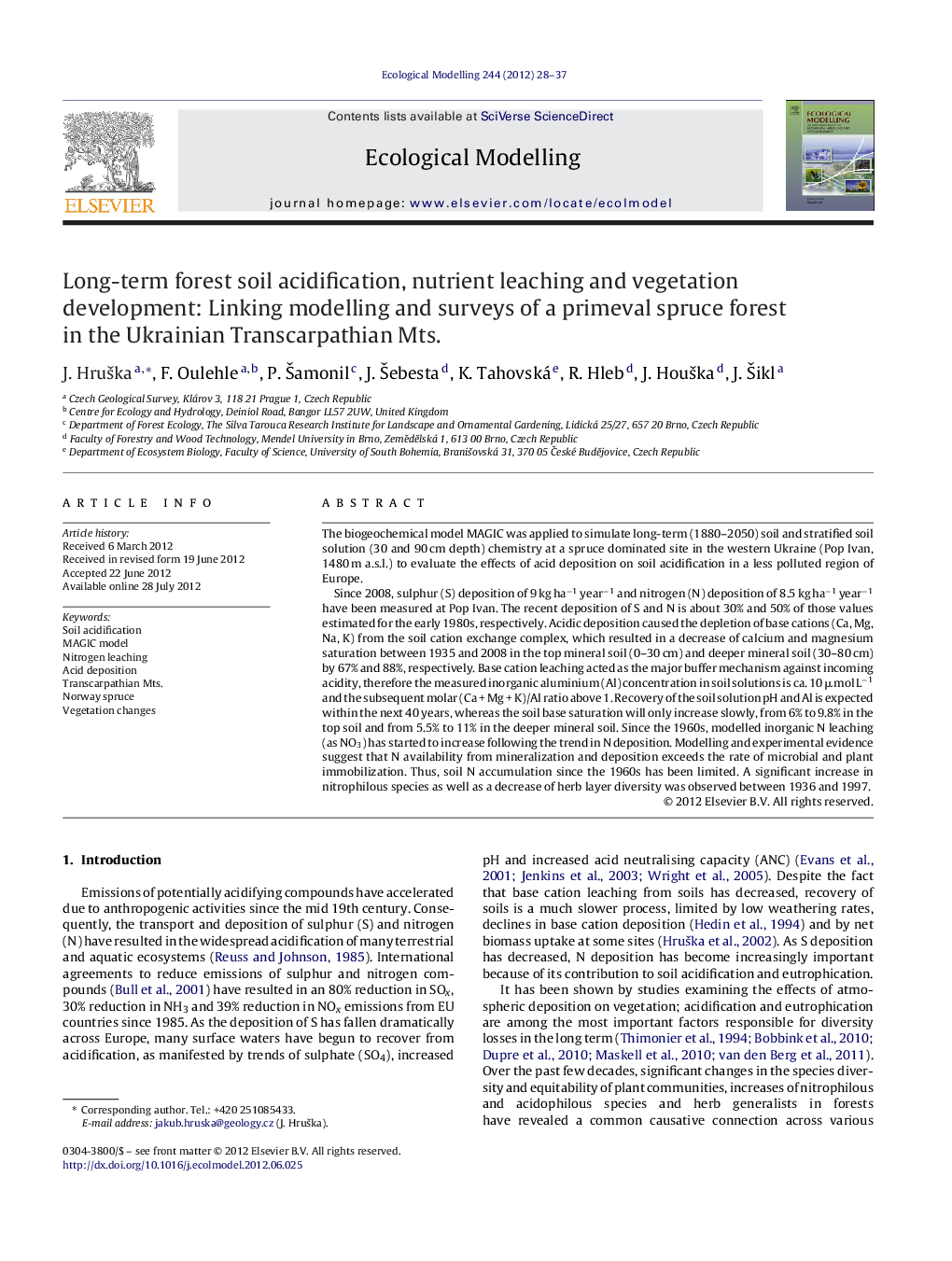| کد مقاله | کد نشریه | سال انتشار | مقاله انگلیسی | نسخه تمام متن |
|---|---|---|---|---|
| 4376392 | 1617501 | 2012 | 10 صفحه PDF | دانلود رایگان |

The biogeochemical model MAGIC was applied to simulate long-term (1880–2050) soil and stratified soil solution (30 and 90 cm depth) chemistry at a spruce dominated site in the western Ukraine (Pop Ivan, 1480 m a.s.l.) to evaluate the effects of acid deposition on soil acidification in a less polluted region of Europe.Since 2008, sulphur (S) deposition of 9 kg ha−1 year−1 and nitrogen (N) deposition of 8.5 kg ha−1 year−1 have been measured at Pop Ivan. The recent deposition of S and N is about 30% and 50% of those values estimated for the early 1980s, respectively. Acidic deposition caused the depletion of base cations (Ca, Mg, Na, K) from the soil cation exchange complex, which resulted in a decrease of calcium and magnesium saturation between 1935 and 2008 in the top mineral soil (0–30 cm) and deeper mineral soil (30–80 cm) by 67% and 88%, respectively. Base cation leaching acted as the major buffer mechanism against incoming acidity, therefore the measured inorganic aluminium (Al) concentration in soil solutions is ca. 10 μmol L−1 and the subsequent molar (Ca + Mg + K)/Al ratio above 1. Recovery of the soil solution pH and Al is expected within the next 40 years, whereas the soil base saturation will only increase slowly, from 6% to 9.8% in the top soil and from 5.5% to 11% in the deeper mineral soil. Since the 1960s, modelled inorganic N leaching (as NO3) has started to increase following the trend in N deposition. Modelling and experimental evidence suggest that N availability from mineralization and deposition exceeds the rate of microbial and plant immobilization. Thus, soil N accumulation since the 1960s has been limited. A significant increase in nitrophilous species as well as a decrease of herb layer diversity was observed between 1936 and 1997.
► We modelled soil and soil solution chemistry for the period 1880–2050 (MAGIC model).
► Moderate S and N deposition resulted in soil acidification.
► Slow recovery of soil chemistry is expected until 2050.
► Examined spruce ecosystem is susceptible to N leaching.
► Enhanced N availability supports the decrease of vegetation diversity.
Journal: Ecological Modelling - Volume 244, 10 October 2012, Pages 28–37